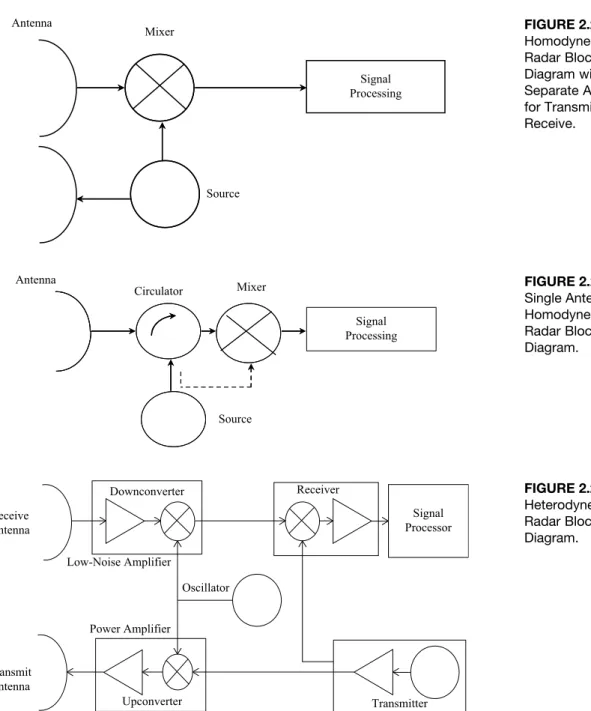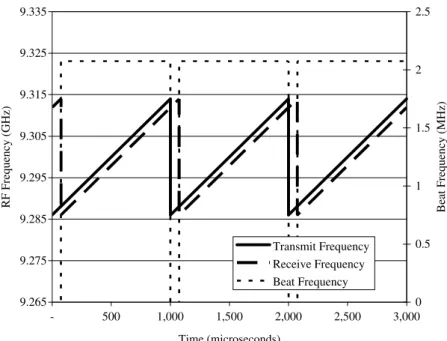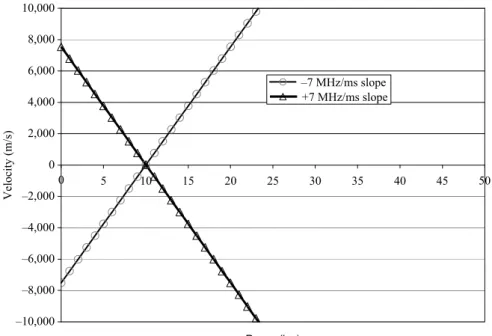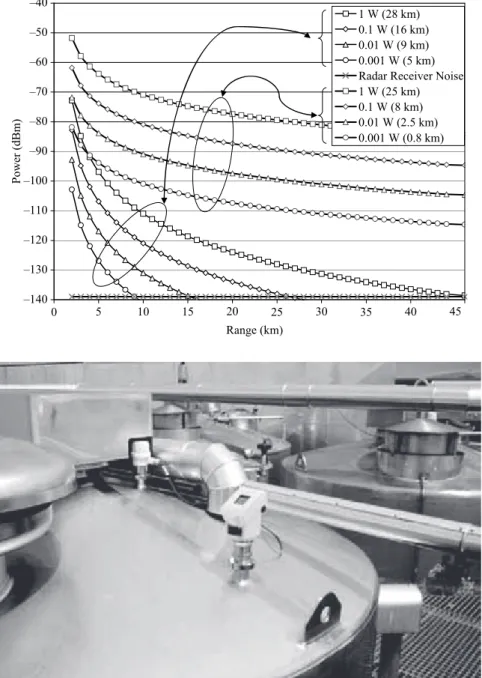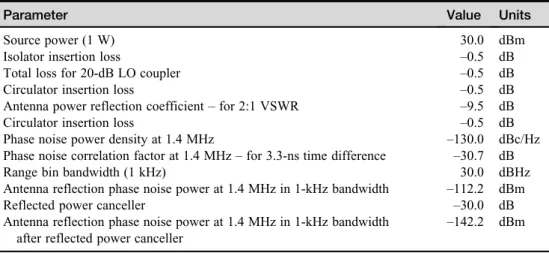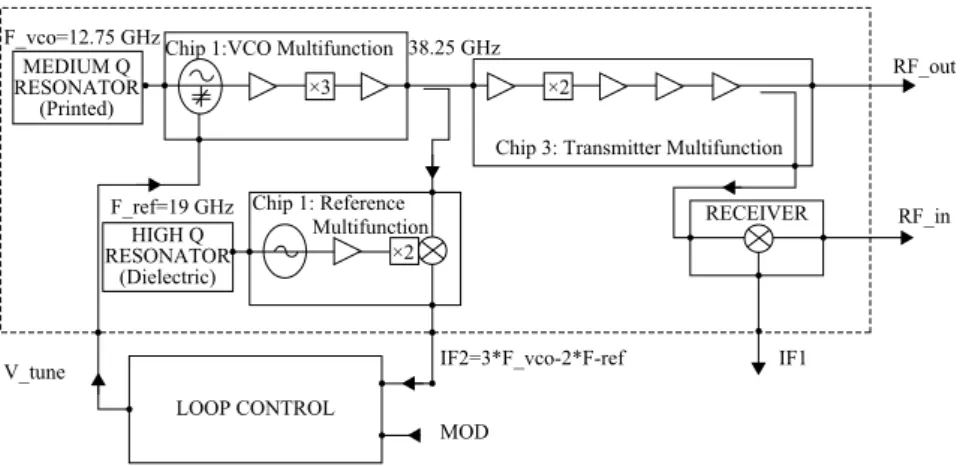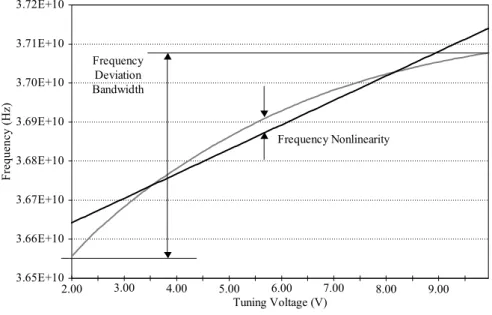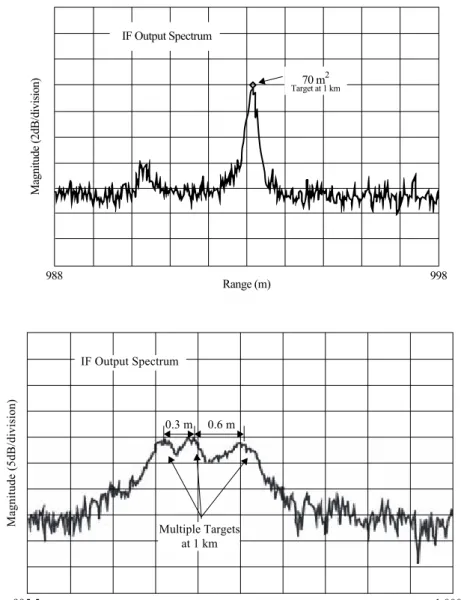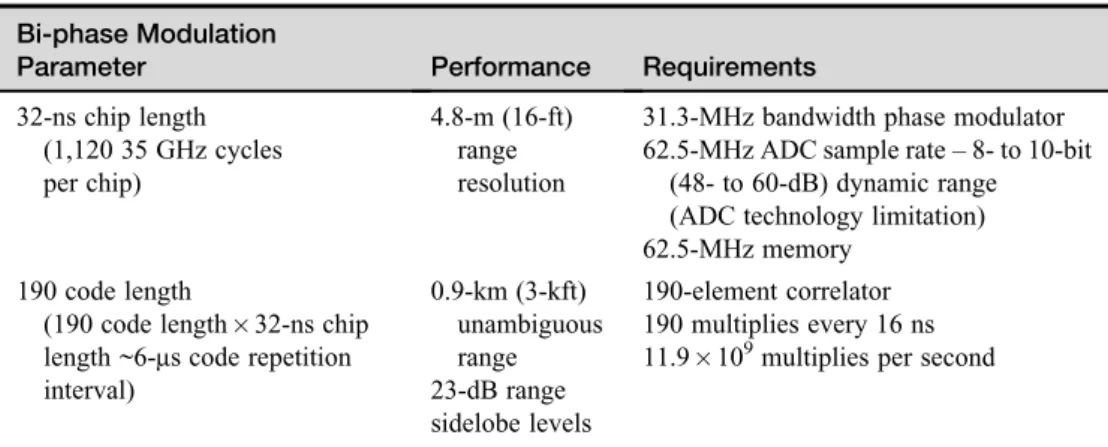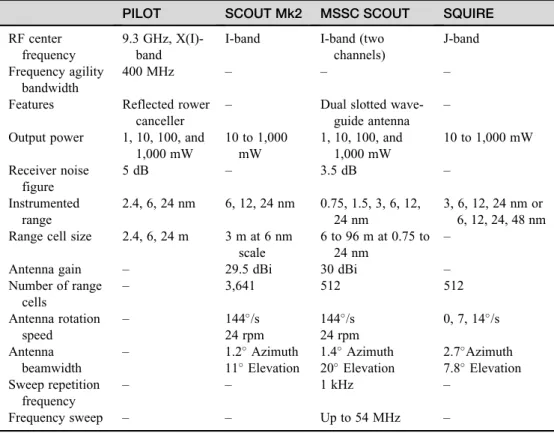Principles of Modern Radar
Principles of Modern Radar
Vol. III: Radar Applications
William L. Melvin
Georgia Institute of Technology
James A. Scheer
Georgia Institute of Technology
Edison, NJ scitechpub.com
www.theiet.org
Copyright2014 by SciTech Publishing, Edison, NJ. All rights reserved.
No part of this publication may be reproduced, stored in a retrieval system or transmitted in any form or by any means, electronic, mechanical, photocopying, recording, scanning or otherwise, except as permitted under Sections 107 or 108 of the 1976 United States Copyright Act, without either the prior written permission of the Publisher, or authorization through payment of the appropriate per-copy fee to the Copyright Clearance Center, 222 Rosewood Drive, Danvers, MA 01923, (978) 750-8400, fax (978) 646-8600, or on the web at copyright.com. Requests to the Publisher for permission should be addressed to The Institution of Engineering and Technology, Michael Faraday House, Six Hills Way, Stevenage, Herts, SG1 2AY, United Kingdom.
While the author and publisher believe that the information and guidance given in this work are correct, all parties must rely upon their own skill and judgement when making use of them. Neither the author nor publisher assumes any liability to anyone for any loss or damage caused by any error or omission in the work, whether such an error or omission is the result of negligence or any other cause. Any and all such liability is disclaimed.
Editor: Dudley R. Kay Cover Design: Brent Beckley 10 9 8 7 6 5 4 3 2 1
ISBN 978-1-89112-154-8 (hardback) ISBN 978-1-61353-032-0 (PDF) Typeset in India by MPS Limited Printed in the USA by Sheridan Ltd
Printed in the UK by CPI Group (UK) Ltd, Croydon
Contents
Preface xi
Reviewer Acknowledgements xv Editors and Contributors xvii
1 Radar Applications 1
1.1 Introduction 11.2 Historical Perspective 2 1.3 Radar Measurements 5 1.4 Radar Frequencies 6 1.5 Radar Functions 8
1.6 U.S. Military Radar Nomenclature 9 1.7 Topics in Radar Applications 10 1.8 Comments 14
1.9 References 15
2 Continuous Wave Radar 17
2.1 Introduction 172.2 Continuous Wave Radar 21
2.3 Frequency Modulated CW Radar 26 2.4 Other CW Radar Waveform Designs 63 2.5 FMCW Radar Applications 67
2.6 References 82
3 MMW Radar Characteristics and Applications 87
3.1 Introduction 873.2 The MMW Spectrum 88
3.3 Propagation at Higher Frequency 89 3.4 Antenna Beamwidth Considerations 93 3.5 MMW Performance Limitations 94
3.6 Typical Seeker or Smart Munition Configuration 98 3.7 MMW Radar Applications 108
v
3.8 MMW Future Trends 112 3.9 Further Reading 113 3.10 References 114
4 Fire-Control Radar 117
4.1 Introduction 1174.2 Airborne Fire-Control Radar 123 4.3 Surface-Based Fire-Control Radar 160 4.4 Electronic Counter Countermeasures 170 4.5 The ‘‘AN’’ Equipment-Designation System 172 4.6 References 173
4.7 Further Reading 173
5 Airborne Pulse-Doppler Radar 175
5.1 Introduction 1755.2 Geometry 177
5.3 The Doppler Shift and Motivation for Doppler Processing 181 5.4 Range and Doppler Distribution of Clutter 185
5.5 Contours of Constant Doppler and Range 196 5.6 Example Scenario 199
5.7 Pulse-Doppler Conceptual Approach 203
5.8 Ambiguities, Folded Clutter, and Blind Zones 216 5.9 Overview of PRF Regimes 226
5.10 High PRF Mode 228 5.11 Medium PRF Mode 235 5.12 Low PRF Mode 246 5.13 Summary 248 5.14 References 249
6 Multifunction Phased Array Radar Systems 251
6.1 Introduction 2516.2 Operational Concepts and Military Utilities 254 6.3 MPARS Sizing and Performance Evaluation 257 6.4 ESA Overview 262
6.5 Radar Control and Resource Management 268 6.6 MPARS Technologies 276
6.7 MPARS Testing and Evaluation 280
6.8 Netcentric MPARS Applications 281 6.9 References 283
6.10 Further Reading 283
7 Ballistic Missile Defense Radar 285
7.1 Introduction 2857.2 BMD Radar System Requirements 292
7.3 Radar Development for Ballistic Missile Defense 298 7.4 BMD Radar Design 307
7.5 BMD Radar Performance Estimation 312 7.6 References 321
7.7 Further Reading 322
8 Ground-Based Early Warning Radar (GBEWR): Technology and Signal Processing Algorithms 323
8.1 Introduction 323
8.2 Phased Array Antenna 335 8.3 Transceiver 342
8.4 Waveforms and Signal Processing 348 8.5 Tracking 352
8.6 Electronic Counter-Countermeasures (ECCM) Capabilities 357 8.7 Special Functions 359
8.8 Conclusions and Further Reading 376 8.9 References 377
9 Surface Moving Target Indication 383
9.1 Introduction 3839.2 SMTI Radar Operation 390 9.3 Signal Models 393
9.4 SMTI Metrics 400
9.5 Antenna and Waveform Considerations 405 9.6 Clutter-Mitigation Approaches 410
9.7 Detection Processing 418
9.8 Angle and Doppler Estimation 421 9.9 Other Considerations 424
9.10 Summary 426 9.11 Further Reading 427 9.12 References 427
10 Space-Based SAR for Remote Sensing 431
10.1 Introduction 43110.2 Historical Perspective 438 10.3 Orbits 451
10.4 Design Considerations for the Spaceborne SAR 457 10.5 Special Modes and Capabilities 473
10.6 Design Example: Germany’s TerraSAR-X 482 10.7 Summary 493
10.8 References 494 10.9 Further Reading 498
11 Passive Bistatic Radar 499
11.1 Introduction 49911.2 Bistatic Radar 505
11.3 Passive Bistatic Radar Waveforms 509 11.4 The Signal Environment 519
11.5 Passive Bistatic Radar Techniques 524 11.6 Examples of Systems 527
11.7 Conclusions 536 11.8 References 537 11.9 Further Reading 540
12 Air Traffic Control Radar 543
12.1 Introduction – The Task of Air Traffic Control (ATC) 543 12.2 System Requirements/Mission 552
12.3 Design Issues 558
12.4 The Future of ATC Radar 582 12.5 Summary 585
12.6 Further Reading 585 12.7 Acknowledgments 585 12.8 References 585
13 Weather Radar 591
13.1 Introduction 59113.2 Typical Weather-Radar Hardware 595
13.3 The Radar-Range Equation for Weather Radar 598 13.4 Doppler Processing 603
13.5 Hydrological Measurements 609
13.6 Characteristics of Some Meteorological Phenomena 615 13.7 Sun Echoes and Roost Rings 623
13.8 Advanced Processing and Systems 623 13.9 References 632
13.10 Further Reading 634
14 Foliage-Penetrating Radar 635
14.1 Introduction 63514.2 History of Battlefield Surveillance 637
14.3 Foliage-Penetrating SAR Collection Systems 642 14.4 FOPEN Clutter Characteristics 645
14.5 Image Formation 654
14.6 Radio Frequency Interference 665
14.7 Target Detection and Characterization 676 14.8 Summary 684
14.9 References 685 14.10 Further Reading 688
15 Ground-Penetrating Radar 691
15.1 Overview 69115.2 Pulsed Ground-Penetrating Radar System Design 697 15.3 GPR System Implementation and Test Results 731 15.4 Conclusions 746
15.5 References 746
16 Police Radar 749
16.1 Introduction 74916.2 The History of Technologies that Enabled Police Radar 750 16.3 Review of Homodyne Radar Principles 751
16.4 The First Police Radar 753
16.5 The Cosine Error Caused by Improper Operation 754 16.6 The Next-Generation S-band Radar 755
16.7 The Move to X-band – 10 GHz 758
16.8 A Second Method Used to Achieve the Ferro-Magnetic Circulator Function 763
16.9 Moving Radar with Improved Detection Range Capability 764
16.10 Moving-Mode Police Radar Operation 766
16.11 Alternative Phase-Locked Loop Signal-Processing Approach 770 16.12 The Move to K-band Frequencies 771
16.13 Police Radar Moves to the Ka-band and Utilizes Digital Signal Processing 772
16.14 Other Police Operating Modes Made Possible by DSP 774 16.15 Summary 777
16.16 References 777 16.17 Further Reading 778 Index 779
Preface
Principles of Modern Radar: Radar Applications is the third of the three-volume series of what was originally designed to be accomplished in one volume. As the final volume of the set, it finishes the original vision of a complete yet bounded reference for radar technology. This volume describes fifteen different system applications or class of applications in more detail than can be found in Volumes I or II.
As different as the applications described, there is a difference in how these topics are treated by the authors. Whereas in Volumes I and II there is strict adherence to chapter format and level of detail, this volume has a wider dynamic range of technical depth. Some system applications lend themselves to a deeper level of technical description than others.
What This Book Addresses
Certainly, there are many applications for which radar technology can be applied.
Each chapter in Principles of Modern Radar: Radar Applications discusses a particular (selected) application or class of applications for the use of radar as a sensor. Not all applications for radar as a sensor are addressed in this volume, nor could they be.
However, a varied selection of applications are included, providing a fairly broad cross section of surface-based and aerospace systems, defense-oriented as well as commercial technologies, and European as well as American systems.
It was difficult to determine which system applications should be selected for this volume. Some areas of technology are so new that intellectual property rights restricted us from developing a complete picture of those applications. In other cases, classifica- tion issues were at play. Even considering these issues, there are many other radar applications that might have been covered, and a selection had to be made. We hope you are pleased with our choices.
Why This Book Was Written
The original vision for PoMR was to provide the radar community with a single resource that described the latest radar technology, as driven largely by advancements in digital signal-processing (DSP) capability. Since DSP technology is maturing at such a fast pace, the ability to employ advanced techniques grows with it. The growth of these new techniques influences the development of advanced antenna techniques as well as sub- system radio-frequency and intermediate frequency hardware. The first two volumes in this series describe basic principles, some of which are true for legacy systems and some of which have experienced relatively recent use, as well as specific advanced techniques in the use of this technology. So, the first two volumes provide a complete picture of radar technology from the first principles to the advanced techniques in use today. With the publication of the first two volumes, it was natural to complete the original vision by preparing this volume describing selected modern radar applications.
xi
Who Should Read This Book
Different from Volumes I and II, this volume is not intended as a textbook for the university environment. Rather, it was originally developed to be largely readable by the layperson, who might not necessarily have all the mathematical and scientific back- ground to fully appreciate the material in the first two volumes. That stated, this volume is also intended to fill in some detail, reinforce or expand on fundamental technological issues described in the first two volumes, and round out understanding of system issues, at least for a selection of applications.
How the Chapters Are Structured
The framework for each chapter was written roughly to answer the following questions:
What are the system requirements? What are the particular radar issues associated with these requirements? How specifically are these features incorporated in the system?
Examples of specific systems representing the class of applications discussed herein support the answers to these questions. Since different radar technology com- munities sometimes use different, or unique, symbols and abbreviations, many chapters have a separate table of abbreviations and symbols. It would be more difficult to read if all of the abbreviations and symbols were consolidated at the end of the book. Since this volume is not expected to be used as a university text, no student questions are included.
The History of the PoMR Series
As discussed in the prefaces of Volumes I and II, the PoMR series was originally planned as one volume, entitled Principles of Modern Radar: Basic Principles, Advanced Techniques, and Radar Applications. The resulting number of chapters and sheer amount of the material suggested two volumes: the Basic Principles volume and the Advanced Techniques and Radar Applications volume. True to form, as Volume II emerged, it was separated into two volumes, resulting in the current set of three volumes.
Volume I was written to provide a modern look at the fundamental technology and design issues related to radar technology in general. It provides an in-depth look at the modern signal-processing techniques available today, many that were not supported by the computing resources (signal- and data-processing technology) available even ten years ago. Volume II was prepared to demonstrate specific signal-processing techniques that are not required in every system in development but are relatively new to the field of radar. The current volume, Radar Applications, cites specific examples of the use of basic principles and advanced techniques.
It is interesting to note that many of the signal-processing techniques in use today were first discussed in the early (World War II era) series prepared at the MIT Radiation Laboratory.1 The techniques were known, but available signal-processing technology
1This refers to a twenty-one-book series of topics related to radar technology titled MIT Radiation Laboratory Series, McGraw Hill Book Company, New York, NY, 1948.
did not support implementation until modern digital signal-processing equipment became available.
Acknowledgements
As editors for this volume, we are very grateful to the publisher, Dudley Kay, for his enduring support and encouragement. Special thanks also go to Brent Beckley for all of his efforts on the sales and marketing front. We are also grateful to Dudley and Brent for gathering and managing the unusually numerous volunteer reviewers whose participa- tion as a ‘‘community effort’’ over the course of the three-volume series has been remarkable and inspiring.
Most important, though, we remain thankful to our families for their patience, love, and support as we prepared materials, revised, reviewed, coordinated, and repeated. This book, like the others, represents time away from the ones we love. We thank them for their understanding, kindness, and support.
To Our Readers
We hope the reader will enjoy this book! Radar is and will continue to be an immensely exciting and diverse field of engineering.
Please report errors and refinements. We know from the publication of the first two volumes that even the most diligently reviewed and edited book is bound to contain errors in the first printing. It can be frustrating to see such errors persist, even in many subsequent printings. We continue to appreciate SciTech Publishing’s commitment to correct errors and enhance the book with each printing. So, it remains a ‘‘community effort’’ to catch and correct errors and improve the book. You may send your suspected errors and suggestions to:
This email will reach us and SciTech concurrently so we can confer and confirm the modifications gathered for scheduled reprints. You are always welcome to contact us individually as well.
Bill Melvin Atlanta, GA Jim Scheer New Bern, NC
Reviewer Acknowledgements
SciTech Publishing – IET gratefully acknowledges the manuscript reviewing efforts from the following members of the international radar and electronic warfare commu- nity. Refinements to the book’s content and expression for the benefit of all readers represent the blessing of ‘a community effort’.
Ron Aloysius, Northrop Grumman Corporation, USA Edward R. Beadle, Harris Corporation, USA
Lee Blanton, General Atomics Corporation, USA Neal Brune, Esterline Defense Technologies, USA Kernan Chaisson, Captain, USAF (retired)
I-Ting Chiang, Qualcomm, USA
Jean Yves Chouinard, Universite Laval, Canada Patrick Dever, Northrop Grumman Corporation, USA John Erickson, Wright-Patterson Air Force Base, USA Phillip Fitch, University of South Australia, Australia Riccardo Fulcoli, Selex ES, Italy
Gaspare Galati, Universita` di Roma Tor Vergata, Italy Frank Gekat, Selex Systems Integration, Germany Martie Goulding, MDA Corporation, Canada Hugh Griffiths, University College London, UK Stephen Harman, QinetiQ, UK
Stephen Hogue, Harris GCSD, USA
Michael Inggs, University of Cape Town, South Africa Stephane Kemkemian, Thales Airborne Systems, France
Peter Knott, Fraunhofer Institute for High Frequency Physics and Radar Techniques, Germany
Thodoris G. “Ted” Kostis, University of the Aegean, Greece Anthony Leotta, ADL Associates, USA
David Long, Brigham Young University, USA John Milan, Consultant, USA
Lee Moyer, Technology Service Corporation, USA
Karl-Erik Olsen, Norwegian Defence Research Establishment, Norway A. M. (Tony) Ponsford, Raytheon Canada Ltd., Canada
Pinaki S. Ray, University of Adelaide, Australia Earl Sager, Consultant, USA
John SantaPietro, The MITRE Corporation, USA
Margaret M. “Peggy” Swassing, 412th Test Engineering Group (Edwards AFB), USA Firooz Sadjadi, Lockheed Martin Corporation, USA
John Sahr, University of Washington, USA Alexander Singer, Thales Group, Canada Koen van Caekenberghe, HiSilicon, Belgium
xv
Editors and Contributors
Volume Editors
Dr. William Melvin
Volume Editor-in-Chief and Multiple Chapter Author
William Melvin is Director of the Sensors and Electromagnetic Applications Laboratory at the Georgia Tech Research Institute and an Adjunct Professor in Georgia Tech’s Electrical and Computer Engi- neering Department. His research interests include systems engineer- ing, advanced signal processing and exploitation, and high-fidelity modeling and simulation. He has authored more than 180 publications in his areas of expertise and holds three patents on adaptive radar technology. Among his distinctions, Dr. Melvin is a Fellow of the IEEE, with the follow citation: ‘‘For contributions to adaptive signal processing methods in radar systems.’’ He received the PhD, MS, and BS (with High Honors) degrees in Electrical Engineering from Lehigh University.
Mr. James A. Scheer
Associate Volume Editor and Chapter 1 Author
Jim Scheer has forty years of hands-on experience in the design, development, testing, evaluation, and analysis of radar systems. He currently consults and works part-time for GTRI and teaches radar- related short courses. He began his career with the General Electric Company (now Lockheed Martin Corporation), working on the F-111 attack radar system. In 1975, he moved to GTRI, where he worked on radar system applied research until his retirement in 2004. Mr. Scheer is an IEEE Life Fellow and holds a BSEE degree from Clarkson University and the MSEE degree from Syracuse University. His primary interests are in the area of coherent radar performance prediction and evaluation.
Chapter Contributors
Mr. Chris Baker
Chris Baker is the Ohio State Research Scholar in Integrated Sensor Systems at The Ohio State University. Until June 2011, he was the Dean and Director of the College of Engineering and Computer Science at the Australian National University (ANU). Prior to this, he held the Thales- Royal Academy of Engineering Chair of intelligent radar systems based at University College London. He has been actively engaged in radar
xvii
systems research since 1984 and is the author of more than 200 pub- lications. His research interests include coherent radar techniques, radar signal processing, radar signal interpretation, electronically scanned radar systems, radar imaging, and natural and cognitive echo-locating systems. He is the recipient of the IEE Mountbatten premium (twice) and the IEE Institute premium, and he is a Fellow of the IET. He is a Visiting Professor at the University of Cape Town, Cranfield University, University College London, Adelaide University, Wright State Uni- versity, and Nanyang Technical University.
Mr. Bill Ballard
William Ballard is a Senior Research Associate at the Georgia Tech Research Institute Sensors and Electromagnetic Applications Labora- tory. He is also the course director of the popular Georgia Tech Pro- fessional Education Airborne Fire Control Systems short course. He is a retired U.S. Navy Commander with more than 3,500 hours and 912 traps in the A-6 Intruder. He has served on the faculty at the NATO School (SHAPE) in Oberammergau, Germany where he taught NATO Maritime Operations, Conventional Weapons Employment, and Naval NBC Defense. Both his bachelor’s and master’s degrees in Mechanical Engineering and Management Science are from Georgia Tech.
Mr. Melvin L. Belcher
Mel Belcher is a Principal Research Engineer at Georgia Tech Research Institute (GTRI). He has worked in the development and analysis of phased array radars systems for more than three decades. He has focused on air- and missile-defense applications and has also contributed to air- borne radar and space surveillance radar efforts. His professional inter- ests include systems engineering, active electronically scanned arrays, and signal and data processing. He currently serves as the Technical Director of the Sensors Knowledge Center within the Missile Defense Agency. He founded and led the Air and Missile Defense Division at GTRI. He served as Chief Engineer for Radar Futures at Northrop Grumman Mission Systems from 2005 through 2010. He received the MSEE from Georgia Institute of Technology and the BEE from Auburn University.
Mr. Lee Blanton
Lee Blanton is a radar engineer with General Atomics Aeronautical Systems, Inc., where he supports development of radars for unmanned aerial vehicles (UAVs). His thirty-five-year career in industry has focused primarily on radars for airborne, missile-borne, and spaceborne applications with additional work in the areas of satellite communication and electronic warfare systems. His spaceborne radar experience includes design studies for the proposed Venus Orbiting Imaging Radar and its successor, the Magellan Venus Radar Mapper, as well as concept studies for spaceborne radars for the Air Defense Initiative (ADI), the Strategic Defense Initiative (SDI), and imaging radar applications.
Dr. Mark E Davis
Mark Davis has forty-five years of experience in government and industry in developing technology and systems for radar and electronic systems. After retirement in 2008, he established MEDavis Consulting as a sole proprietorship to serve the radar science and technology com- munity. He served at DARPA as Deputy Director Information Exploi- tation Office from 2006 to 2008. Prior to this assignment, he was the Technical Director for Air Force Research Laboratory Space Based Radar Technology (1998–2006) and Program Manager in DARPA Information Systems Office for Counter CC&D technologies (1995–
1998). His interests are in radar and microwave system design, phased array antennas, and adaptive signal processing.
Dr. Davis is a Life Fellow of the IEEE and Military Sensing Sym- posia and is Chair of the IEEE Radar Systems Panel. He has a PhD in Physics from The Ohio State University and bachelor’s and master’s degrees in Electrical Engineering from Syracuse University.
Dr. Antonio De Maio
Dr. Antonio De Maio was born in Sorrento, Italy, on June 20, 1974. He received the DrEng degree (with honors) and the PhD degree in infor- mation engineering, both from the University of Naples Federico II, Naples, Italy, in 1998 and 2002, respectively. From October to Decem- ber 2004, he was a Visiting Researcher with the U.S. Air Force Research Laboratory, Rome, New York. From November to December 2007, he was a Visiting Researcher with the Chinese University of Hong Kong.
Currently, he is an Associate Professor with the University of Naples Federico II. His research interest lies in the field of statistical signal processing, with emphasis on radar detection, optimization theory applied to radar signal processing, and multiple-access communications.
Dr. De Maio is an IEEE Fellow and the recipient of the 2010 IEEE Fred Nathanson Memorial Award as the young (less than forty years of age) AESS Radar Engineer 2010 whose performance is particularly noteworthy as evidenced by contributions to the radar art over a period of several years, with the following citation for ‘‘robust CFAR detection, knowledge-based radar signal processing, and waveform design and diversity.’’
Dr. Alfonso Farina
Alfonso Farina received the doctorate degree in electronic engineering from the University of Rome (I), Italy, in 1973. In 1974, he joined Selenia, now SELEX Electronic Systems, where he has been a Manager since May 1988. He was Scientific Director in the Chief Technical Office. He was the Director of the Analysis of Integrated Systems Unit, Director of Engineering in the Large Business Systems Division, and Chief Tech- nology Officer of the Company (SELEX Sistemi Integrati). Today he is Senior Advisor to CTO of SELEX ES. From 1979 to 1985, he has also been a Professor of radar techniques with the University of Naples. He is the author of more than 500 peer-reviewed technical publications as well
as the author of books and monographs. He has been nominated Fellow of IEEE, international fellow of the Royal Academy of Engineering, United Kingdom, and Fellow of EURASIP. He has been appointed member in the Editorial Boards of IET Radar, Sonar and Navigation (RSN) and of Sig- nal, Image, and Video Processing Journal (SIVP). He has been the General Chairman of the IEEE Radar Conference, 2008. He is a Fellow of the Institution of Engineering and Technology (IET), United Kingdom.
He is also the recipient of the 2010 IEEE Dennis J. Picard Gold Medal for Radar Technologies and Applications with the following citation: ‘‘For continuous, innovative, theoretical and practical contributions to radar systems and adaptive signal processing techniques.’’
Mr. E. F. Greneker
Mr. E. F. Greneker was employed by Georgia Tech Research Institute (GTRI) for thirty-three years before his retirement as a Principal Research Scientist. He was responsible for the establishment of the GTRI Severe Storms Research Center (SSRC) and served as the founding Director of the SSRC. During his career with GTRI he directed more than sixty major sponsored research projects for many U.S. gov- ernment agencies and the military services. Many of these sponsored projects related to the use of radar for national security purposes. Other projects included using radar to track insects, and police radar. He has authored more than 85 papers, journal articles, and the chapter on police radar in this book. He is a Senior member of the IEEE. He holds five U.S. patents, with others and two as sole inventor. While employed by GTRI, he consulted to government agencies through his consulting firm, Greneker and Associates, Inc.
After retiring from GTRI, he started his own business, RADAR Flashlight, LLC (RFLLC). RFLLC performed research for the Defense Advanced Research Projects Agency and the U.S. Army on topics relating to detecting humans through a wall using radar. RFLLC also performed research for the U.S. Air Force on radar detection of moving targets from an unmanned aerial vehicle. Mr. Greneker’s current interests include remote sensing, both optical and radar, passive radar, radar applications for highway safety, and radar used for security purposes.
Mr. Hugh Griffiths
Hugh Griffiths was educated at Hardye’s School, Dorchester, and Keble College, Oxford University, where he received the MA degree in Phy- sics in 1978. He also received the PhD (1986) and DSc (Eng) (2000) degrees from the University of London. He holds the THALES/Royal Academy of Engineering Chair of RF Sensors at University College London. From 2006 to 2008, he served as Principal of the Defence College of Management and Technology, at the Defence Academy, Shrivenham. From 1982 to 2006, he was with University College Lon- don as Head of the Department of Electronic and Electrical Engineering from 2001 to 2006. His research interests include radar sensor systems and signal processing (particularly synthetic aperture radar and bistatic
and multistatic radar and sonar) as well as antennas and antenna mea- surement techniques. He has published more than 400 papers and tech- nical articles on these subjects.
Professor Griffiths was awarded the IET A F Harvey Prize in 2012 for his work on bistatic radar. He has also received the IERE Lord Brabazon Premium Award in 1984, the IEE Mountbatten and Maxwell Premium Awards in 1996, and the IEEE Nathanson Award in 1996. He served as President of the IEEE AES Society for 2012–13. He has been a member of the IEEE AESS Radar Systems Panel, which he chaired from 2006 to 2009, and is Editor-in-Chief of the journal IET Radar, Sonar, and Navigation. He was Chairman of the IEE International Radar Con- ference RADAR 2002 in Edinburgh, United Kingdom. He also serves on the Defence Scientific Advisory Council for the U.K. Ministry of Defence. He is a Fellow of the IET, Fellow of the IEEE, and in 1997 was elected to Fellowship of the Royal Academy of Engineering.
Mr. Stephane Kemkemian
Stephane Kemkemian graduated in Aerospace Engineering from ISAE, Toulouse, France. He began his career at Thales working on RDY and RBE2 radar prototypes (radars for the Mirage-2000 and Rafale fighters, respectively). He is now senior expert with the Technical Directorate of Thales Airborne Systems. He holds around thirty patents and is the author of about twenty papers. He is senior member of the French SEE and founding member of the IEEE AESS French chapter.
Dr. Richard C. Liu
Richard C. Liu received his BS, MS, and PhD degrees in radio engi- neering from Xi’an Jiaotong University, Xi’an, China, in 1982, 1984, and 1988, respectively. Since 1988, he has been with the Department of Electrical and Computer Engineering, University of Houston, Houston, TX, where he is currently a Professor and the Director of the Well Logging Laboratory and the Subsurface Sensing Laboratory. His research areas include resistivity well logging, tool simulation, tool hardware design, electromagnetic telemetry systems, ground-penetrating radar, sensor technology, wireless telecommunication systems, short- range radio, and RF and microwave circuit design. Dr. Liu has published more than 160 technical papers in these areas.
Dr. Liu is a senior member of IEEE, member of the Society of Professional Well Logging Analysts, the Environmental and Engineering Geophysics Society, and the Society of Core Analysts.
Mr. Aram Partizian
Aram Partizian is a Senior Research Scientist at GTRI, where he con- tributes to the design, development, and field-testing of advanced radar electronic warfare technologies. He has more than thirty years of experience in radar and the electronic warfare field, including software and system engineering roles at Raytheon Company prior to joining Georgia Tech. He earned a BA in Physics from Oberlin College in 1977.
Mr. Samuel Piper
Samuel O. Piper is a GTRI Fellow and Principal Research Engineer, and since 2002 has served as Chief of the Radar Systems Division in the Sensors and Electromagnetic Applications Laboratory in GTRI. He has more than forty years of experience in radar systems engineering and analysis. He serves as coordinator for the Georgia Tech Principles of Continuous Wave (CW) Radar short course. He earned a master’s degree in EE from Georgia Tech.
Mr. John Porcello
John Porcello is a Senior Research Engineer for the Georgia Tech Research Institute (GTRI). John designs, develops, and implements digital signal processing (DSP) algorithms in FPGAs for a wide range of applications, including radar and communications. John has more than twenty years of experience as an engineer and is a Senior Member of the IEEE and a private pilot.
Mr. Jay Saffold
Jay Saffold is the Chief Scientist for RNI and has more than twenty years of engineering experience in both military and industry research in RF tags, virtual reality, digital databases, soldier-tracking systems, milli- meter wavelength (MMW) radar, multimode (MMW and optical) sensor fusion, fire-control radar, electronic warfare, survivability, signal pro- cessing, and strategic defense architecture. He lectures annually for GTRI on remote sensing and signal processing. He has authored or coauthored more than 104 technical papers and reports. He holds a BSEE degree from Auburn University.
Dr. Luca Timmoneri
Luca Timmoneri is a Vice President of SELEX ES, where he is currently Chief Technical Officer of the Land and Naval Division. His working interests span from the area of synthetic aperture radar, to radar STAP, to detection and estimation with application to tridimensional phased array radar, to parallel-processing architectures.
Dr. Timmoneri is the author of several peer-reviewed papers (also invited). He is the coauthor of three tutorials presented at International IEEE radar conferences. He received the 2002, 2004, and 2006 AMS (now SELEX ES) CEO Award for Innovation Technology; the 2003 AMS (now SELEX Sistemi Integrati) MD Award for Innovation Technology; the 2004 Finmeccanica Innovation Award; and the 2013 Oscar Masi Award for industrial innovation of the Italian Association for Industrial Research.
Mr. John Trostel
John Trostel is a senior research scientist and Director of the Severe Storms Research Center at the Georgia Tech Research Institute (GTRI).
His fields of specialization include the meteorology of severe storms, development of data-acquisition and analysis systems, effects of meteorological phenomena on MMW propagation and backscatter, and
general physics and meteorological expertise. He was part of a GTRI team tasked to support the FAA in the development of a Multifunction Phased Array Radar (MPAR) system and was involved in investigations of MMW backscatter characteristics of snow-covered ground, atmo- spheric acoustics, and underwater sonar development. He is an active member of the American Meteorological Society, National Weather Association, American Geophysical Union, and American Physical Society.
Radar Applications 1
William L. Melvin, Ph.D., and James A. Scheer, Georgia Institute of Technology, Atlanta, GA
Chapter Outline
1.1 Introduction . . . . 1 1.2 Historical Perspective. . . . 2 1.3 Radar Measurements . . . . 5 1.4 Radar Frequencies . . . . 6 1.5 Radar Functions. . . . 8 1.6 U.S. Military Radar Nomenclature . . . . 9 1.7 Topics in Radar Applications . . . 10 1.8 Comments . . . 14 1.9 References. . . 15
1.1 INTRODUCTION
Radio detection and ranging (radar) involves the transmission of an electromagnetic wave to a potential object of interest, scattering of the wave by the object, receipt of the scattered energy at the receive site, and signal processing applied to the received signal to generate the desired information product. Originally developed to detect enemy aircraft during World War II, radar has through the years shown diverse application, not just for military consumers, but also for commercial customers. Radar systems are still used to detect enemy aircraft, but they also keep commercial air routes safe, detect speeding vehicles on highways, image polar ice caps, assess deforestation in rain forests from satellite platforms, and image objects under foliage or behind walls. A number of other radar applications abound.
This book is the third in a series. Principles of Modern Radar: Basic Principles, appearing in 2010, discusses the fundamentals of radar operation, key radar subsystems, and basic radar signal processing [1]. Principles of Modern Radar: Advanced Techni- ques, released in 2012, primarily focuses on advanced signal processing, waveform design and analysis, and antenna techniques driving tremendous performance gains in radar system capability [2]. This third text, Principles of Modern Radar: Radar Appli- cations, combines the developments of Basic Principles and Advanced Techniques to illustrate a myriad of radar applications.
1
Principles of Modern Radar: Radar Applications is comprised of three sections:
● Tactical Radar, covering continuous wave radar, with application to missile seekers and other low-cost radar needs; millimeter wave radar, used in areas such as battle- field fire-control systems and automotive radar; fire-control radar principles; airborne pulse Doppler radar, the heart of airborne interceptor radar; multifunction radar used to search, track, and engage airborne targets and employing sophisticated and costly phased array antennas, processing software, and resource management; and ballistic missile defense radar.
● Intelligence, Surveillance, and Reconnaissance, including early warning detection of aircraft and missiles preceding handoff to a tracking radar; surface moving target indication, used to detect and monitor targets on Earth’s surface; and spaceborne surveillance used to remotely monitor Earth resources, cultural sites, and military facilities.
● Specialized Applications, including passive radar, which uses noncooperative sources of illumination and receivers displaced a considerable distance from the various transmit sites; air traffic control radar; weather radar; foliage-penetrating radar;
ground- and materials-penetrating radar; and police radar.
Individual chapters discuss the aforementioned topics within these three sections in further detail, identifying key considerations and the practical application of radar technology, principles, and techniques to accomplish the specific radar objective:
detecting, locating, and tracking targets moving on Earth’s surface; imaging a stationary target under foliage; detecting approaching or receding targets from an airborne pulse Doppler radar; detecting and tracking ballistic missiles from large, ground-based phased array radar; protecting ground troops from mortar attack using mobile, counterbattery surface radar; and so on.
1.2 HISTORICAL PERSPECTIVE
The earliest radar developments appear to have taken place independently in a number of countries. World War II accelerated the development of radar to address the direst of situations. That military application has served as a primary motivation for radar tech- nology development complicates an exposition on its history due to sundry requirements for secrecy. Consequently, spirited debate amongst radar developers over who deserves acclaim for certain innovations is not uncommon.
Reference [3] provides a remarkable overview of the earliest beginnings of radar.
The possibility of a system to detect objects based on reflected electromagnetic waves dates to the 19th century and the work of Heinrich Hertz, with James Clerk Maxwell’s work on electromagnetism suggesting this possibility. Other great minds invariably associated with the earliest beginnings of radar include Christian Hulsmeyer, Nikola Tesla, Guglielmo Marconi, Sir Robert Wattson-Watt, and Hoyt Taylor. As [3] discusses, highly protected programs to develop radar took place leading up to and during World War II in a number of countries, including England, France, Germany, Japan, Canada, and the United States. Robust radar programs were further known to exist in the Soviet Union, Italy, and the Netherlands.
The detection of air raids was of paramount importance during World War II.
Generally, surface-based radars, such as the British Chain Home radar system [4], were developed for this purpose. These original surveillance radars provided an early warning function so citizens could take shelter and service personnel could launch interceptor aircraft. The interceptors similarly required radar to acquire and engage enemy bombers and provide self-protection from enemy escort aircraft. Early warning and fire-control radar were also necessary for naval shipboard protection. World War II applications solidified the need for microwave transmitters and receivers and pulsed waveforms. As pointed out in [4], this period of extensive innovation involved the efforts of multiple researchers and engineers, resulting in radar having no single lineage, but a collection of forefathers.
The earliest radar experiments involved continuous waveforms and bistatic configurations to achieve sufficient isolation between transmitter and receiver [4, 5].
The technology available at the time could only support detection; range information was not available to the operator. Moreover, many of these initial investigations involved longer wavelengths – in the vicinity of 60 cm or greater. A requirement for range information and improved spatial accuracy led to microwave developments and pulsed radar modes. For years beyond World War II, noncoherent pulsed radar systems were used for a number of important applications.
A coherent radar employs a stable, coherent oscillator to transmit and receive signals.
In this manner, the radar keeps track of the phase of the receive signal over time. A time- varying phase leads to a frequency shift in the receive signal. If the range between the radar and the object of interest is changing, the time it takes the signal to propagate to the object and return to the radar istðtÞ ¼2rðtÞ=c, where rðtÞis the time-varying range and c is the velocity of propagation (nominally, the speed of light). The corresponding phase is fðtÞ ¼wtðtÞ, wherewis frequency in radians. Frequency is the time-derivative of phase, fð_ tÞ ¼w@tðtÞ=@t. Suppose rðtjt¼nTÞ ¼r0þnDr, with T the sample time, n the sam- ple index, r0the initial range, andDr the constant change in range between sample times resulting from a constant velocity target. The corresponding derivative of the phase function is fð_ tjt¼nTÞ ¼ ð4p=lÞðDr=DtÞ, with Dt the change in time; we recognize Dr=Dt as the radial velocity (or range–rate), vr, andfð_ tjt¼nTÞ ¼wd¼ ð4p=lÞ vr (or, fd¼2vr=lin Hz) as the well-known Doppler shift [4, 6].
The ability to take advantage of the target Doppler shift was revolutionary, providing the radar with additional information on target motion and enabling a mechanism to better separate target returns from those of background clutter due to reflections from Earth’s surface or even from weather phenomenon. Thus, the extensive development of coherent radar systems followed the major accomplishments of the World War II era and occupied the minds of radiofrequency scientists and engineers for subsequent decades. The pulsed Doppler mode is the cornerstone of modern radar technology, integral to surface and aerospace military radar systems. Pulsed Doppler radar has important civilian and commercial applications, permeating everyday life in the form of television weather newscasts with detailed radar weather maps and air traffic control radar making the skies safe for travelers of all types. Coherent continuous wave radars are also important, providing target Doppler information for applications ranging from missile engagement to police traffic surveillance.
Coherency also makes all-weather terrain and stationary target mapping possible via a technology known as synthetic aperture radar (SAR) [2, 6–8]. SAR was invented
in the 1950s, with Carl Wiley of Goodyear Aircraft Company viewed as its originator, and multiple parties greatly contributing to its development. The primary objective of SAR is to create a high-resolution map of the scene reflectivity; the resulting product has image-like quality and is generally interpreted by a trained analyst. In its most basic form, SAR uses knowledge of the collection geometry, generating a matched filter tailored to the phase history of a particular, resolvable, stationary scatterer of interest.
As previously discussed, the phase history is fðtÞ ¼wtðtÞ, where in this case the change in range over time typically leads to a nonlinear characteristic for tðtÞ, and consequently a response comprised of time-varying frequency. The SAR is built and deployed in such a way that ideally the various scatterers possess unique phase his- tories, though practically there are basic limitations affecting the quality of the reflec- tivity estimate. Image-formation processing is the series of steps applied to the phase history data to generate the SAR map.
SAR has played important military roles in areas such as nuclear arms treaty monitoring and battlefield surveillance, preparation, and damage assessment. Meeting these stringent and critical applications required extraordinary effort to achieve pristine coherency over relatively long periods of time – data are collected over periods of hun- dreds of milliseconds to tens of minutes or more, a duration required to traverse sufficient viewing angle to achieve a desired cross-range resolution – and conceive computationally feasible approaches to approximate the matched filter condition. Indeed, system coher- ency and signal-processing algorithm development have served as hallmarks of SAR technology development. Early SAR image formation used optical signal-processing methods, with digital signal-processing techniques replacing the former after a relatively extended period of time needed for available technology to sufficiently advance. With some delay, civil applications of SAR emerged, including Earth resources monitoring, polar ice cap monitoring, and extraterrestrial planetary exploration.
Over the past twenty years or so, the radar community has significantly focused on radar subsystem hardware improvement, signal-processing algorithm development and implementation, and diverse applications. The development of phased array radar has been a major undertaking and a critical step in radar deployment for air and missile defense and multimode airborne radar systems [9]. Advances in computing technology have made digital beamforming (DBF) and space-time adaptive processing (STAP) possible [2, 9–11]. DBF and STAP are key elements in radar electronic protection, superior clutter mitigation techniques, and advanced concepts such as passive radar where DBF makes ‘‘pulse chasing’’ feasible [5]. Radar’s diverse applications made possible through technology maturation include through-the-wall radar for law enfor- cement support; the detection, location, and characterization of dismount targets (persons of interest traversing Earth’s surface) from airborne radar [12]; remote sensing of ocean currents; border surveillance; gait analysis for threat monitoring (e.g., detection of a perimeter breach by unauthorized personnel) and medical diagnosis (e.g., assess- ment of indicators of traumatic brain injury); automotive radar for intelligent highways;
and the development of low-cost passive surveillance radar hosting off of commercial communications broadcasts [13].
Radar has proven its importance to society. As such, radar development and implementation has generally received favorable treatment under situations of compet- ing interest. An emerging conflict over spectrum allocation among users of the electromagnetic spectrum will intensify, leading radar developers to innovate and conceive new technology and capabilities [14]. In addition to spectrum, energy is
placing pressure on radar: The proliferation of wind farms as an alternative energy source creates a whole new class of interference requiring mitigation to ensure effective radar performance. Radar will also be asked to solve new and challenging problems, such as identification of humans in emergency management situations resulting from such natural phenomena as earthquakes; the detection of small vessels traversing the littoral zone expanse; and the beneficial exploitation of multipath in urban settings to enable non–line-of-sight radar detection and tracking of objects [15].
This book summarizes and puts into perspective a select number of important and modern radar applications, as well as the requisite constituent technology. As such, it builds on the exposition set forth in the first two volumes of the Principles of Modern Radar series [1, 2].
1.3 RADAR MEASUREMENTS
Radar operation requires an active source of illumination. Monostatic and cooperative bistatic radar use a coordinated transmitter. Noncooperative bistatic radar exploits the transmissions from other electronic systems, including radio towers, communication transmit antennas, and other radars. Cooperative systems attempt to tailor the transmit waveform to the extent possible to maximize important radar quality measures, such as signal-to-noise ratio (SNR), signal-to-interference-plus-noise ratio (SINR), range reso- lution, target class separation, and resilience to radiofrequency interference (RFI).
The radar generates its product based on target-induced modulation of the reflected waveform. Radar design allows access to the following primary measurements:
● Fast-time – collected at the analog-to-digital converter rate, these voltages corre- spond to sampling in the range dimension.
● Slow-time – collected at the pulse repetition interval (PRI), the corresponding voltages are the pulse-to-pulse measurements for a given range cell. The Fourier transform of slow-time is Doppler.
● Spatial – samples generated at the output of a multichannel or multibeam receive antenna, where each channel or beam has its own receive chain. Angle information follows from the Fourier transform of the spatial channel measurements; the inverse transform of the multibeam output restores spatial sample information. The mea- sured angle corresponds with azimuth, elevation, or cone, where cone is an ambig- uous measurement related to a specific direction cosine in the antenna coordinate system.
● Polarimetric – consists of two basic forms, dual-polarization and quad-polarization.
In dual-polarization, the transmit polarization is fixed and the receive antenna collects orthogonal polarizations (e.g., the transmitter sends out a vertically polarized wave, and the receiver collects both vertical and horizontal polarizations). Quad- polarized operation requires the transmitter to interleave transmissions of orthogonal polarizations, and the receiver simultaneously collects two orthogonal polarizations as in the dual-polarized case.
● Multipass – the radar can collect data at a common operating frequency, polarization, and bandwidth over distinct orbits and then process the data to look for scene changes. When the processing is coherent from pass to pass, the mode is called
coherent change detection (CCD); naturally, noncoherent change detection operates on magnitude-only data from pass to pass. Change detection makes it possible to detect subtle changes in the scene, such as the presence of tire tracks on a dirt road or areas of trampled grass.
It is the purpose of the radar signal processor to operate on the radar measurements and generate the radar data product. A data signal processor, such as a tracker, operates on this output to assist the operator or analyst in interpreting events.
Regarding radar measurements, it is worth pointing out the difference between monostatic, bistatic, and multistatic systems [2]. The radar transmitter and receiver are collocated in monostatic radar. The bistatic configuration employs transmit and receive sites separated by an appreciable distance [5]; the distance is not precisely defined, but it is instructive to consider the bistatic configuration one in which target and clutter- scattering phenomenology are distinct from the monostatic case, and hence include different information content. A cooperative bistatic system controls its illumination source, whereas a noncooperative bistatic system employs illuminators of opportunity.
Multistatic radar merges data from multiple bistatic nodes and can yield substantially enhanced geolocation performance resulting from the combination of the diverse target measurements [19].
Invariably, radar applications involve collecting and exploiting distinct measure- ments to achieve a given mission objective. Different measurement domains enable the radar to better differentiate a desired target from interference and other potential targets.
At times, practical considerations – cost, deployment issues, etc. – affect the measure- ment domains collected by the radar.
1.4 RADAR FREQUENCIES
Radar operating frequency is chosen based on a number of considerations. Important trade factors include but are not limited to the following.
● Spatial resolution: For a fixed aperture size, beamwidth is proportional to l=La;m, where l is wavelength and La;m is the aperture length in the mth dimension.
● Propagation: Lower frequencies propagate farther and are used in very long range surveillance systems. As frequency increases, so does atmospheric attenuation due to water vapor, rainfall, and other weather effects as well as from dust and suspended particulates [16].
● Materials penetration: Radar systems that must find targets under foliage, behind walls, under canopies, or below soil favor lower frequency operation. Foliage- penetrating (FOPEN) radar systems typically operate at frequencies from several tens of megahertz up to 1 GHz; ultrahigh frequency (300 MHz to 1 GHz) is a popular choice, trading off attenuation for resolution. Through-the-wall radar favors L-band (1–2 GHz) as a good trade between attenuation through the wall, resolution, and aperture size.
● Electromagnetic interference/electromagnetic compatibility (EMI/EMC): The char- acteristics of spectrum use in the vicinity of the radar siting or operating environment influence frequency selection. For example, placing a radar in the vicinity of a
high-power communications transmitter influences frequency selection and the general system design.
● Electronics: The availability and cost of electronic components at a given frequency influence the design. There are many radar systems built at X-band, for instance, leading to lower-cost electronics than at Ku-band, making it more challenging to justify Ku-band designs without other compelling factors.
● Target properties: Target phenomenology varies with frequency selection [16, 17].
● Fractional bandwidth limitations: High resolution requires wider waveform band- width and design consideration to accommodate dispersion and hardware mismatch effects. Generally, instantaneous bandwidths drive the system design up to higher operational frequency as a means of simplification.
● Radiofrequency interference: Radar frequency may be selected to avoid operating in a band covered by jamming systems [2, 18].
Table 1-1 summarizes the radar frequency operating bands. Specific frequency allocations for radar are designated by governing bodies: the International Telecommunications Union (ITU) in particular, with coordination among other national agencies.
Example applications for the various frequencies are given in Table 1-1. The nomenclature relates to the function. For example:
● the ‘‘L’’ in ‘‘L-band’’ refers to long range application;
● Ku is ‘‘K under’’ and Ka is ‘‘K above,’’ respectively, due to their frequency ranges relative to K-band;
TABLE 1-1 ¢ Radar Frequency Bands
Frequency Range Example Application(s)
High frequency (HF) 3–30 MHz Ground-penetrating radar, over-the-horizon radar (OTHR), very long range surveillance radar Very high
frequency (VHF)
30–300 MHz Foliage-penetrating radar, very long range surveillance radar
Ultrahigh
frequency (UHF)
300–1,000 MHz Foliage-penetrating radar, airborne surveillance radar, long range ballistic missile defense radar L-band 1,000–2,000 MHz Weapons location radar, air traffic control radar,
long range surveillance radar
S-band 2,000–4,000 MHz Naval surface radar, weapons location radar, weather radar
C-band 4,000–8,000 MHz Weather radar
X-band 8,000–12,000 MHz Fire-control radar, air interceptor radar, ground- mapping radar, ballistic missile–tracking radar Ku-band 12,000–18,000 MHz Air-to-ground SAR and surface-moving target
indication
K-band 18,000–27,000 MHz Limited due to absorption
Ka-band 27,000–40,000 MHz Missile seekers, close-range fire-control radar Millimeter wave
(mmw)
40,000–300,000 MHz Fire-control radar, automotive radar, law enforce- ment imaging systems, airport scanners, instru- mentation radar
● the ‘‘X’’ in X-band stands for ‘‘X marks the spot,’’ due to the common use of this frequency for fire-control systems (some suggest that the X is the roman numeral representing 10, the approximate center frequency in GHz for the X-band); and
● ‘‘C-band’’ is a ‘‘compromise’’ between a selection of X-band and S-band.
The radar center wavelength is given as lo¼c=fo, where fo is the center frequency. Wavelengths on the order of a millimeter technically start just slightly above 30 GHz.
1.5 RADAR FUNCTIONS
All radar systems operate on the same physical principle: an active source illuminates a target, a receiver then collects scattered target energy, and a processor generates the radar product (e.g., dots on a screen representing target detections or a synthetic aperture radar image). From this basic concept of radar operation arise different radar functions.
Radar mode design implements variants of these core functions: search, track, and recognition. In general, the purpose of the core radar functions falls into one of two primary categories, as given in [2]:
● moving target indication (MTI), with subsequent steps to estimate target motion and type, perhaps followed by a tracker to refine target position and velocity estimates and predict where the target will next appear; or
● radar imaging, the process of collecting data, estimating radiofrequency reflectivity over the local coordinates of interest, and then mapping the estimates to a geo- referenced framework.
In search, the radar system attempts to acquire targets of interest. Examples include an airborne early warning (AEW) radar scanning the sky for incoming aircraft and an air interceptor (AI) radar scanning for enemy fighter aircraft. In a similar vein, imaging radar typically ‘‘lay down’’ a certain number of beams per specified time interval to collect spotlight SAR data, or scan a certain area on Earth’s surface in stripmap mode with the objective of searching for certain target types; in the former case, the target of interest might be a missile launcher, whilst in the latter scenario the analyst may be trying to identify deforestation or degradation of polar ice caps.
Oftentimes, radar systems that implement the search function are called surveillance radar. The surveillance radar may detect the same target multiple times, thereafter tracking the target through the skill of the radar analyst via something tantamount to
‘‘grease pencil markings on a radar display’’ or by feeding radar measurements into an automated tracker; however, the radar continues to search for new targets with a very similar scan pattern and waveform previously employed to generate existing target indications; and, as already suggested, the nuances of correlating these target detections from scan to scan are left to either the analyst or an automated tracker. Radar resources are not diverted upon detecting a given target; rather, if engagement is to occur, the surveillance radar ‘‘hands off’’ the target to a tracking radar.
The tracking function involves focusing radar resources more acutely on a particular target or set of targets. The radar dedicates resources to ensure adequate measurements
are collected to maintain track quality. Information from the tracker is used to direct the transmit beam to anticipated target locations. For example, an L-band search radar persistently detects an incoming target, thereafter handing off the acquired target to an X-band tracking radar that refines estimates of target state (position, velocity, and possibly acceleration) by frequently collecting target measurements. The product from the tracking radar function is subsequently provided external to the radar system to a command-and-control function.
It is possible that a single radar performs both search and track. Moreover, a single radar can, under the appropriate set of constraints, simultaneously implement both functions in what is known as track-while-scan. In track-while-scan, sufficient radar timeline is available so that, between required tracker updates, the radar can allocate its resources to search for new targets or reacquire targets dropped by the tracker.
In addition to searching for targets and placing them in track, recognition is another important function. Recognition involves coarsely or finely determining the target type through the following steps: discrimination, classification, and identifica- tion. Discrimination bins the target according to level of interest – for example, a potential military target versus generic ground traffic. Classification determines the threat category, such as ground transport, tank, or missile launcher. Identification then narrows the assessment to a particular target class, such as the tank, missile launcher, helicopter, or aircraft model. Different levels of recognition place varying demands on radar resources: discrimination only requires relatively coarse resolution, whereas identification requires greater information and hence higher resolution. These demands force the radar system to modify its operation in a manner distinct from search and track functions.
Recognition may take place at the hands of a trained analyst. An overview of automatic target recognition is given in [2].
1.6 U.S. MILITARY RADAR NOMENCLATURE
Radar nomenclature acknowledges many different radar applications. Table 1-2 shows the nomenclature system used to catalog radar systems in the U.S. military. The first letter designates the platform, the second the equipment type, and the third the TABLE 1-2 ¢ Some Elements of the Joint Electronics Type Designation System (JETDS)a
Platform Equipment Type Application
A – Airborne F – Ground fixed M – Ground mobile S – Surface ship T – Ground transportable U – Ground utility B – Underwater G – Ground K – Amphibious P – Man portable
L – Countermeasures P – Radar
Y – Processing
B – Communications security Q – Sonar
W – Armament
G – Fire control or searchlight directing N – Navigation
Q – Special or multipurpose Y – Surveillance
R – Receive (passive) only
S – Detecting, range and bearing, search
aThe Joint Army–Navy Nomenclature System was previously used to catalog electronic equipment.
application; typically, these letters are preceded by the designation ‘‘AN/’’ (for joint service Army–Navy equipment) and followed by the model number. For example:
● The AN/APY-1 is the radar on the E-3A and E-3B Sentry Airborne Warning and Control System (AWACS). AN/APY-1 reads as ‘‘Army–Navy equipment,’’ airborne platform, radar, surveillance, model number 1. The AN/APY-2 is the radar on the E-3C AWACS and includes a maritime capability.
● The AN/APG-63 is the radar used on the F-15E fighter aircraft. APG-63 stands for airborne platform, radar, fire-control, model number 63.
● The AN/TPQ-53 is the Quick Reaction Capability Radar, sometimes called the Enhanced Firefinder radar. TPQ-53 stands for ground transportable, radar, multi- purpose, model number 53. The TPQ-53 is a counterbattery radar used to defend ground troops from rocket, artillery, and mortar attack. The TPQ-53 is replacing the TPQ-36 Firefinder radar.
● The AN/SPY-1 is part of the U.S. Navy’s Aegis Combat System. It is a passive, phased array surveillance radar used to protect the ship from air and missile attack.
SPY-1 stands for shipborne platform, radar, surveillance, model number 1.
A vast array of radar systems comprise the U.S. military inventory, covering a tremendously wide range of applications. Moreover, military radar innovation has led to civil and commercial opportunities. This book considers a number of different radar applications, discussing key issues, constraints, and technology resulting in a particular radar capability.
1.7 TOPICS IN RADAR APPLICATIONS
This book is organized into three sections: tactical radar; intelligence, surveillance, and reconnaissance (ISR) radar; and specialized radar applications. Topics assigned to a particular section are done so based on predominant use but may hold broader applicability.
1.7.1 Tactical Radar
Tactical radar systems are used to execute an action within a limited timeframe, as opposed to information gathering that indirectly supports future activities. As a military example, tactical radar is used to track and engage an incoming missile. Police radar is used to evaluate speeds of individual vehicles relative to allowable limits and is a civilian safety example. Determination of liquid levels in industrial storage tanks, known as level gauge measurement, is a commercial example.
Continuous wave (CW) radar systems imply low-cost, low-complexity radar. These radar systems typically operate at short range, and their applications include missile seekers, altimeters, active protection systems used to direct a kinetic kill response at incoming rockets, police radar, and automotive safety. Chapter 2 discusses CW radar in detail, covering the basic configuration types; CW radar performance issues and analysis;
modulated CW waveforms, including the commonly used linear frequency modulated CW (FMCW) waveform; and applications leveraging the benefits of CW radar.
Chapter 3 discusses millimeter wave (mmw) radar. As mentioned earlier, the millimeter wave regime technically ranges from 30 GHz to 300 GHz. The shorter
